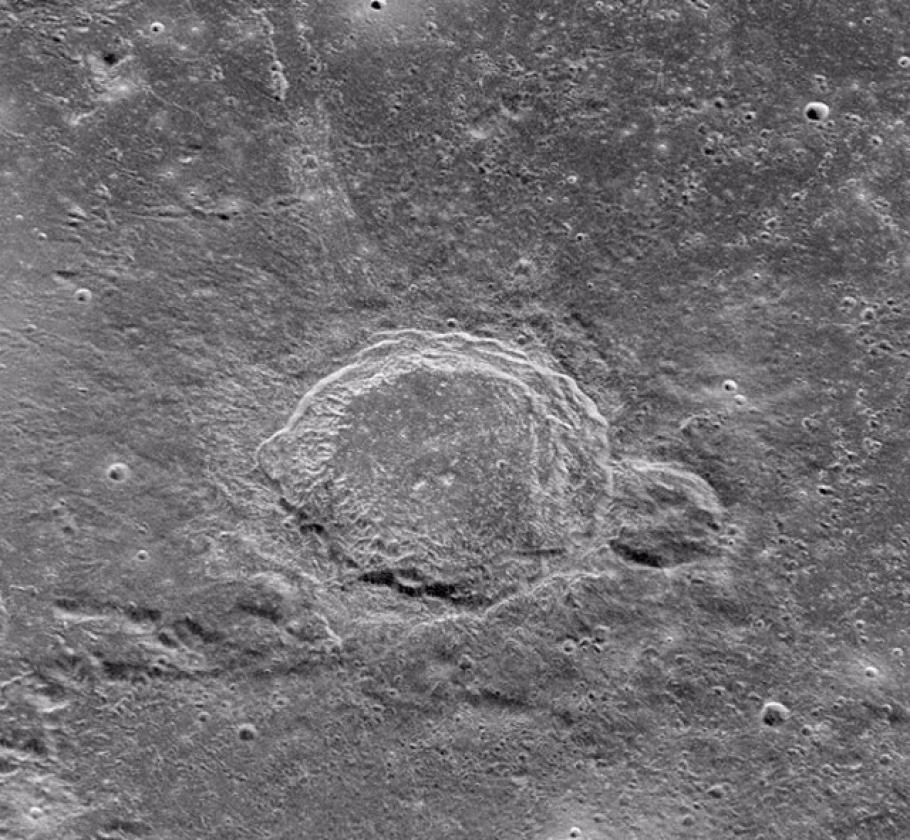“Remote sensing” is a term used to describe many different types of observations carried out at a distance. Aerial photos, satellite images of the Earth and planets, and telescope views of our solar system are all forms of remote sensing used to understand geology, climate, hazards, and changes over time. Not all remote observations use the wavelengths of light visible to humans; there is a wealth of information contained in how a surface reflects or emits radiation across the spectrum from radio waves to gamma radiation. Scientists at the National Air and Space Museum's Center for Earth and Planetary Studies use radar signals, transmitted from satellites in lunar orbit or from the largest radio dishes on Earth, to probe below the dusty surface of the Moon. Radio waves, which have a much longer wavelength than visible light (the Museum's research uses signals with 12.6-centimeter and 70-centimeter wavelengths), penetrate up to 30-40 meters into dry material and reflect from buried layers or rocks suspended in the thick dust.
By carefully measuring the time between the transmitted and received radar signals, and the subtle changes in frequency caused by the rotation of the Moon, the radar “echoes” can be assembled into an image that resembles a photograph, but revealing aspects of lunar geology often hidden from optical cameras. Studies using the new radar maps trace the outlines of ancient lava flows now buried by material hurled from giant impact craters, find rocky material in resource-rich areas that might pose hazards to robotic exploration, and “light up” for the first time areas near the poles that are in permanent shadow from the Sun. Ongoing work suggests that some areas of the smooth lunar “seas," or maria, may have very rugged, boulder-covered lava flows hidden by billions of years of overlying dust; how such rough deposits might form remains a mystery. The lessons learned from studies of the Moon are guiding efforts to design a radar sensor for Mars that will look beneath that dust-covered surface to reveal additional geologic signatures of past and present water.
A 12.6-centimeter wavelength radar view of the lunar crater Aristoteles (87 km diameter). Rugged areas, such the northern interior wall of the crater, appear bright to the radar, and smooth or dusty parts of the surrounding region appear dark. The radar lighting comes from the lower left, so the walls of the crater cast "radar shadows" just as they would for illumination by the Sun. The surrounding clusters and chains of smaller craters were formed by debris ejected from the main crater.

